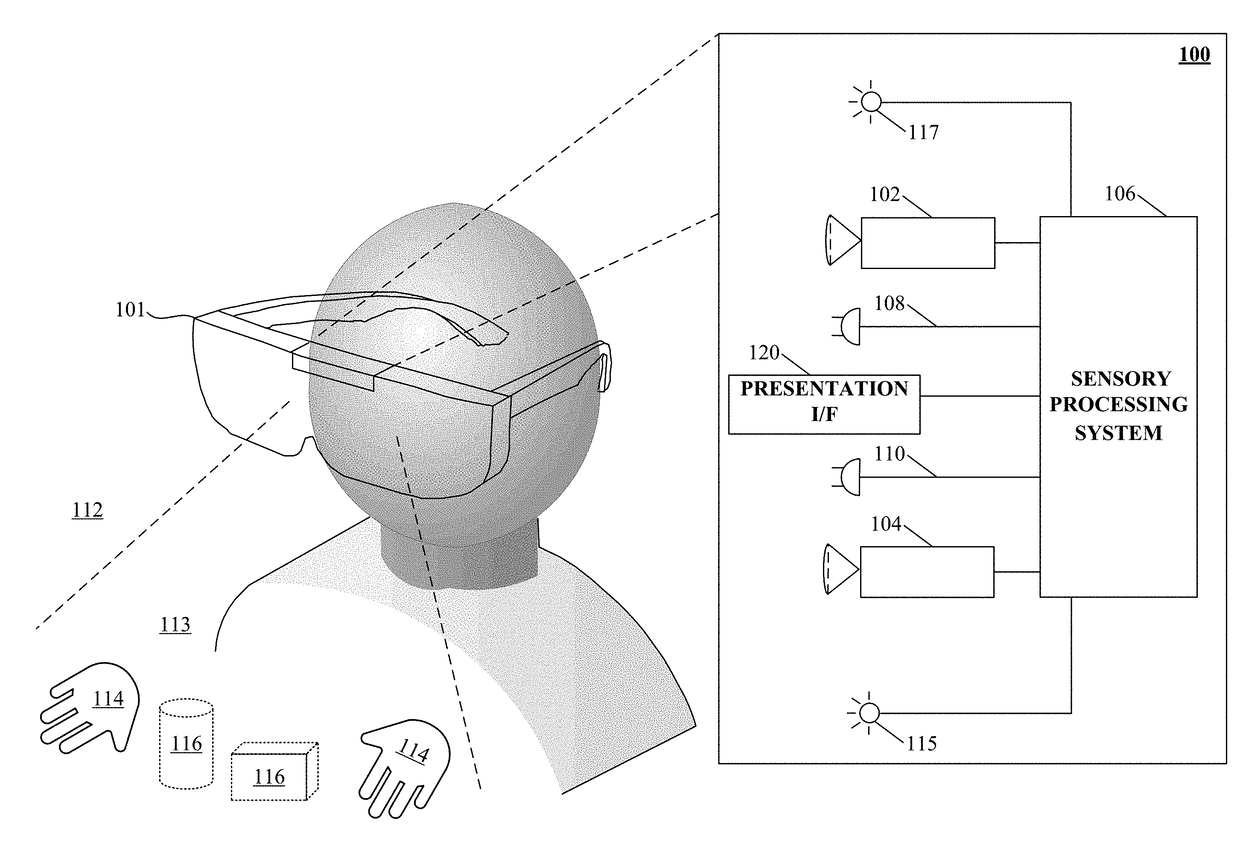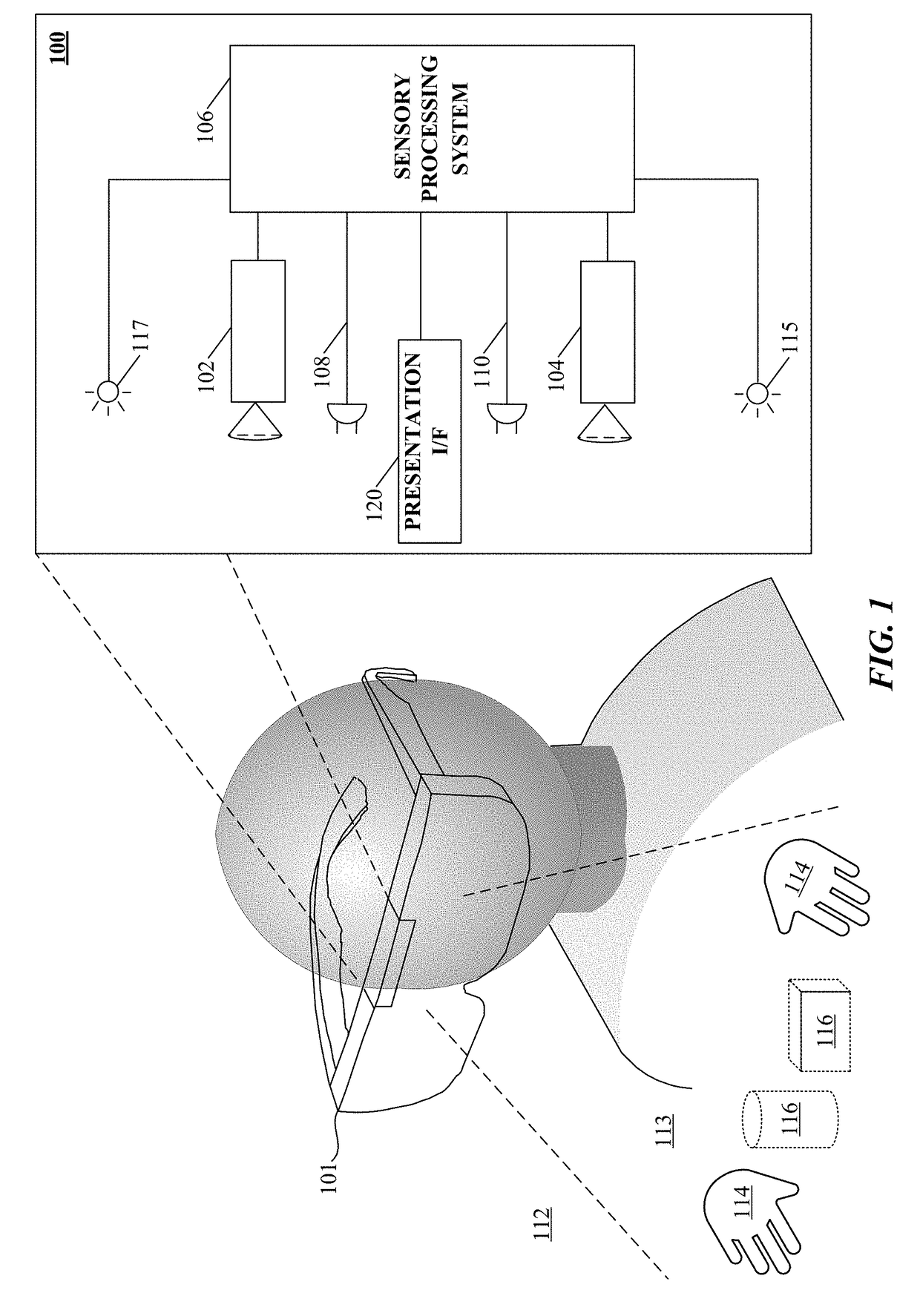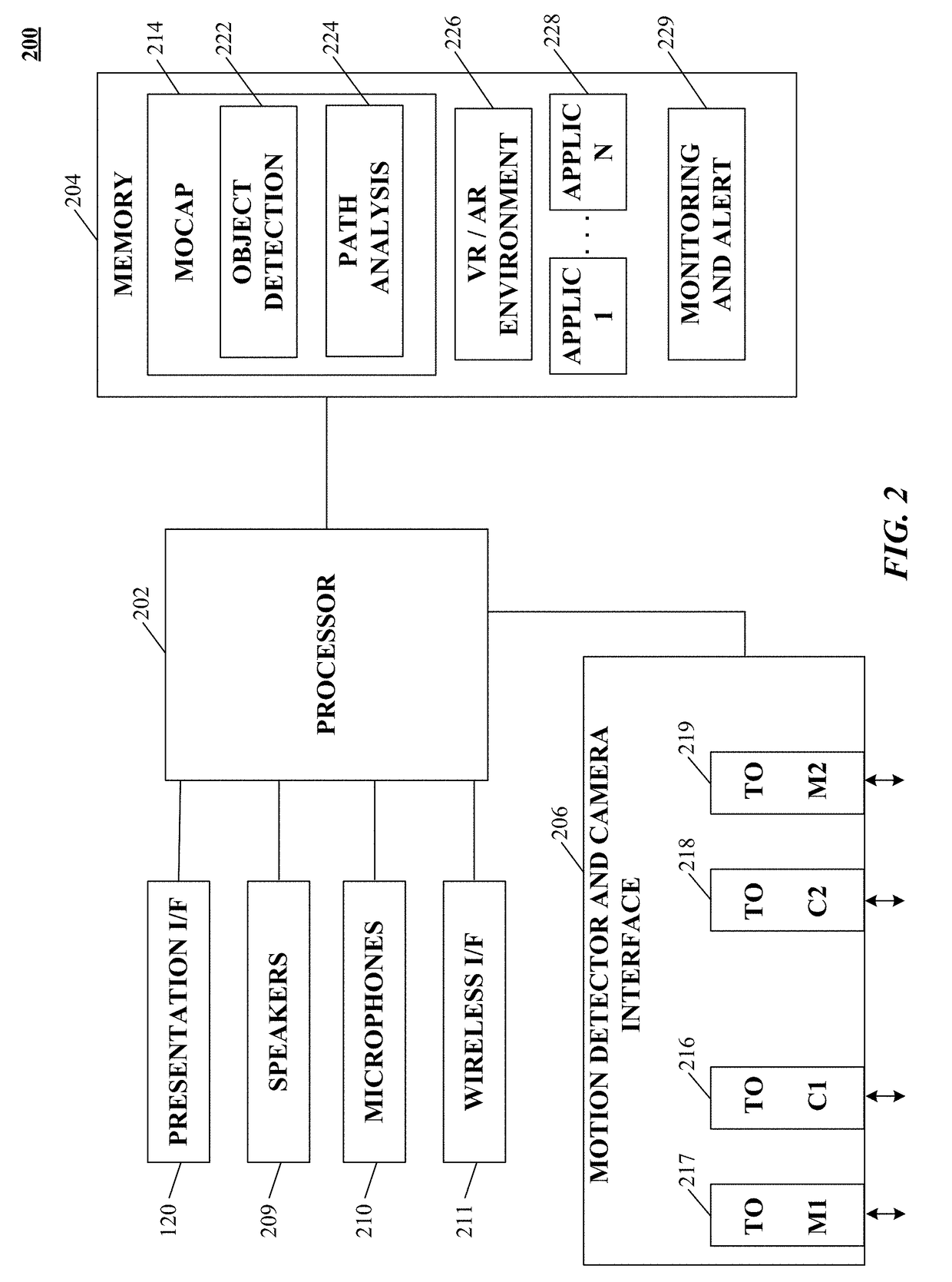Safety for wearable virtual reality devices via object detection and tracking
a virtual reality device and wearable technology, applied in the field of human machine interface, can solve the problems of increasing the likelihood of user collision with nearby objects, affecting the overall user experience, so as to achieve greater portability and improve safety
- Summary
- Abstract
- Description
- Claims
- Application Information
AI Technical Summary
Benefits of technology
Problems solved by technology
Method used
Image
Examples
Embodiment Construction
[0063]Among other aspects, the technology described herein with reference to example implementations can provide for automatically (e.g., programmatically) detecting potential unsafe conditions (e.g., collisions, loss of situational awareness, etc.) confronting the user of a wearable (or portable) sensor configured to capture motion and / or determining the path of an object based on imaging, acoustic or vibrational waves. Implementations can enable improved safety to users of virtual reality for machine control and / or machine communications applications using wearable (or portable) devices, e.g., head mounted displays (HMDs), wearable goggles, watch computers, smartphones, and so forth, or mobile devices, e.g., autonomous and semi-autonomous robots, factory floor material handling systems, autonomous mass-transit vehicles, automobiles (human or machine driven), and so forth, equipped with suitable sensors and processors employing optical, audio or vibrational detection. In some imple...
PUM
 Login to View More
Login to View More Abstract
Description
Claims
Application Information
 Login to View More
Login to View More - R&D
- Intellectual Property
- Life Sciences
- Materials
- Tech Scout
- Unparalleled Data Quality
- Higher Quality Content
- 60% Fewer Hallucinations
Browse by: Latest US Patents, China's latest patents, Technical Efficacy Thesaurus, Application Domain, Technology Topic, Popular Technical Reports.
© 2025 PatSnap. All rights reserved.Legal|Privacy policy|Modern Slavery Act Transparency Statement|Sitemap|About US| Contact US: help@patsnap.com



